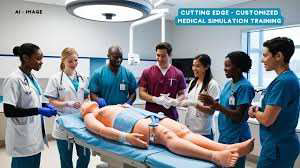INTRODUCTION:
Military medicine has long played a crucial role in advancing healthcare, particularly in areas of trauma care, infectious disease management, and medical technologies. As conflicts evolve, so do the demands placed on military medical professionals, leading to rapid advancements in medical research. The synergy between the military and medical research often results in innovative solutions that benefit not only soldiers but civilians as well. In this blog, we will explore the key ways in which military medicine contributes to the progress of medical research.
1. Trauma Care Innovations
One of the most significant contributions of military medicine to medical research is in the realm of trauma care. Warfighters face injuries from explosions, gunshots, and other traumatic events, necessitating specialized care to save lives. Over the years, the military has developed advanced techniques for treating trauma that have had a lasting impact on civilian medical practices.
For instance, the development of damage control surgery—a technique that prioritizes the stabilization of life-threatening injuries—was first popularized in combat settings. The military also pioneered the use of tourniquets for severe limb injuries and developed protocols for trauma triage, optimizing the way medical teams prioritize and treat patients in emergency situations.
These innovations, often initially tested in military settings, are adopted by civilian hospitals, improving care for trauma patients worldwide.
2. Infectious Disease Research
Military research efforts have also been at the forefront of vaccine development. Recognizing that prevention is the best defense against infectious diseases
Military scientists have developed and refined vaccines against diseases that once threatened operational readiness. For instance, the innovations coming out of Walter Reed Army Institute of Research (WRAIR) have led to successful clinical trials for vaccines targeting Ebola, HIV, and even emerging zoonotic viruses. The rapid transition to mRNA technology—recently used in experimental vaccines for diseases like mpox—illustrates how military research can quickly adapt to new threats while maintaining a high standard of safety and efficacy
3. Medical Technologies and Devices
Artificial Intelligence (AI) is reshaping various aspects of medical technology. AI-powered algorithms are used to interpret medical imaging with high accuracy, predict patient outcomes, and even assist in clinical decision-making. These systems are especially valuable in managing large datasets, where they help uncover patterns that might be missed by human analysts alone. As AI continues to evolve, its role in personalized medicine becomes increasingly critical, allowing treatment plans to be tailored specifically to an individual’s unique health profile.
4. Psychological and Cognitive Health
The mental health of service members has become an increasing area of focus for military medical research. The psychological toll of warfare is profound, leading to conditions such as post-traumatic stress disorder (PTSD), combat-related depression, and anxiety disorders. As awareness grows about the importance of mental health, military researchers have invested in developing new therapeutic interventions, medications, and diagnostic tools.
For instance, military researchers have worked on developing biomarkers for mental health conditions, making it easier to diagnose and treat service members suffering from psychological injuries. They have also contributed to the development of cognitive behavioral therapies (CBT) and other non-pharmacological treatments for PTSD, which are now used widely in civilian healthcare settings.
5. Collaboration with Civilian Research Institutions
One of the most powerful ways in which military medicine drives research is through collaboration with civilian medical research institution
Military and civilian scientists frequently share data, research findings, and medical innovations to improve healthcare for both soldiers and civilians. For example, during the COVID-19 pandemic, military medical researchers worked with civilian institutions to speed up vaccine development and distribute vaccines to various global populations.
Furthermore, the military's access to large, diverse populations—both domestically and internationally—provides unique opportunities for clinical trials and longitudinal studies that might be difficult to conduct in a purely civilian context.
6. Advancing Medical Training and Simulation
To ensure that military healthcare providers are prepared for all scenarios, the military invests heavily in medical training and simulation technologies. These simulations include advanced virtual reality (VR) environments that recreate battlefield injuries and stressors, allowing medical personnel to hone their skills in realistic, high-pressure situations.
These innovations in medical simulation technology have made their way into civilian medical schools and hospitals, providing students and practitioners with better training tools. They also enable healthcare providers to practice rare or complex procedures without the need for real-life patients, improving overall care quality.
Conclusion
Military medicine is much more than a field dedicated to caring for soldiers—it is an indispensable force driving the advancement of medical research. From trauma care and infectious disease management to mental health and cutting-edge medical technologies, the contributions of military medicine have broad implications for public health. The unique challenges of warfare push medical researchers to innovate, and the resulting breakthroughs often have profound impacts on both military and civilian healthcare systems.
By continuing to invest in medical research and by fostering collaborations with civilian institutions, military medicine will undoubtedly continue to shape the future of healthcare, ensuring better care and treatment for people around the world, regardless of their background or where they l
Author Bios
1. MRS.A.SANGEETHA,AP/AI&DS
2. MRS.M.VANITHA,/AP/AI&DS
3. SIVIKSHAA T /II YEAR ,AI&DS
4. DEEPIKA C/II YEAR,AI&DS






Comments
Post a Comment